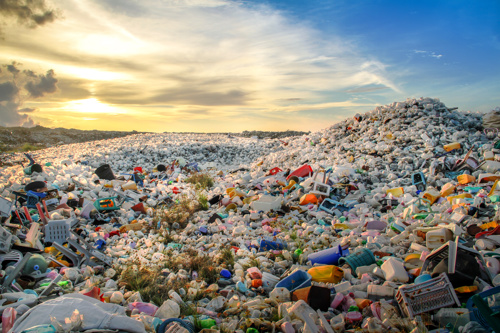With recent warnings from the World Meteorological Organisation that we are now likely to breach the 1.5C climate threshold by 20272, it’s time for us to take action. This World Environment Day (5th June), we look at how to “Beat Plastic Pollution” through implementing efficient waste management systems, and the role of durability in making both sustainability and commercial gains.

THE PLASTIC PROBLEM SET TO PEAK
In the past 50 years, plastic production has surged and is expected to double over the next 20 years. Nearly half (46%) of the world’s plastic waste floods into landfills, 22% becomes litter, 17% is incinerated and only 15% is collected for recycling.
The effects of plastic production and poor waste management are catastrophic and with more plastic waste mismanaged than recycled, the scale of the problem is clear.
From the estimated 19 to 23 million tonnes of plastic that leak into aquatic ecosystems every year, seriously harming marine life4, to the 1.8 billion metric tonnes of greenhouse gases produced from plastic5, there is an urgent need for us to do better.
BETTER RECYCLING TO BEAT PLASTIC POLLUTION
As World Environment Day puts it: “It is not surprising that plastic is so commonplace: it is relatively cheap to produce, durable, flexible and easy to transport”. As a global society, while our reliance on plastic may reduce in future, it’s unrealistic to expect there to be no plastic produced. But it’s staggering that in 2023, 68% of plastic is still ending up as landfill or litter. So, what’s the solution?
Plastic waste should be disposed of using effective waste streams that support recycling, thus reducing the plastic waste that ends up in landfill. As a business community, we have a responsibility to lead the way, implementing the processes and facilities for our plastic-using consumers and employees to appropriately dispose of their plastic waste. This means providing recycling stations that allow for separation of plastic waste at the point of disposal, with clear signposting that helps prevent costly contamination.
Take a look at our five top tips for making a difference with recycling in your facility.
STARTING YOUR JOURNEY TO BETTER PLASTIC RECYCLING
We understand that for many businesses, knowing where to start and getting to grips with best practice is a challenge. To support those looking for advice, we’ve put together a series of free online resources that will help you understand how to go about implementing better recycling practices in your facilities – and the commercial benefits of doing so!
Take a look at our Love to Learn Recycling Hub, where you’ll find a 90-second recycling audit tool, online recycling training modules, and more resources to help you to start beating plastic pollution.
THE ROLE OF PRODUCT LONGEVITY – BUY BETTER, WASTE LESS
The plastic pollution crisis really stems from the fact that a lot of plastic produced is used (often just once) and then discarded. Durable products are a critical element of building a better future sustainably, responsibly and commercially.
When choosing the waste and recycling systems in your facility, prioritising quality and durability is a must. Not only are long-lasting products a more sustainable choice through reduced waste frequency, by eliminating the need to regularly replace unreliable and low quality alternatives, replacement and operational costs reduce too.
Our recycling and waste containers come with up to 10 years’ warranty for the peace of mind you need:
Find more tips and insights to help you Buy Better, Waste Less here.
Sources:
Share on Social Media